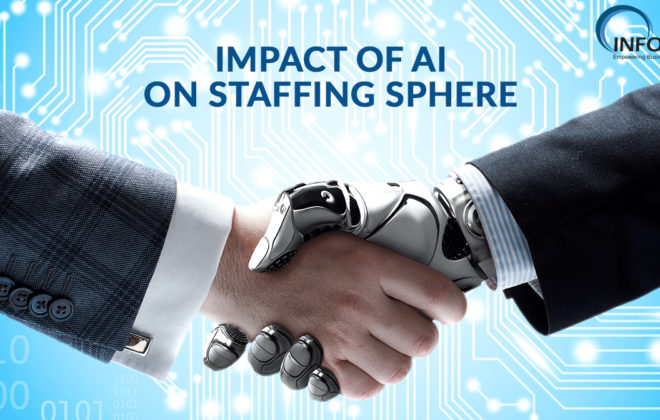The Great Talent Shortage: What’s Behind the Struggle to Hire?
Even though the job market is stabilizing a bit, hiring in 2024 is still a tough nut to crack. After moving past the buzzwords like The Great Resignation and Quiet Quitting, leaders are now facing deeper challenges when it comes to finding the right talent.
So, why is it still so hard to find good people?
A big reason is a shift in the workforce. Many Baby Boomers have recently retired, and Millennials have moved up from entry-level jobs. This has created a gap, especially among Generation X and Generation Z, who are now in demand for leadership and entry-level roles. Experts think this shortage isn’t going away anytime soon and might stick around well into the 2040s.
Take the U.S. as an example. According to data from the U.S. Census and Bureau of Labor Statistics, even though the population and workforce have grown, certain key age groups have actually shrunk between 2010 and 2020—especially those aged 16-24 (who usually take on entry-level jobs) and 45-54 (who typically fill leadership roles). These trends were in motion before the pandemic hit.
How Can Companies Adapt to This New Reality?
Leaders who are thriving despite these challenges are using solid workforce data to make smart decisions. Instead of reacting impulsively, they’re taking thoughtful steps to tackle the real issues:
- Offer Flexibility Across the Board: In the U.S., the 65+ age group saw the biggest increase in the workforce from 2010 to 2020 (58%), followed by those aged 55-64 (17.2%), and then those aged 25-34 (8.6%). Smart leaders are finding ways to keep older workers engaged in roles they might not have considered before, like mentoring younger employees while enjoying more flexible work arrangements. For younger workers in their late 20s and early 30s, flexibility might mean dynamic schedules, support for starting families, and opportunities to learn new skills.
- Use Company Culture to Attract Talent Without Breaking the Bank: Instead of constantly raising salaries and driving up costs, savvy leaders know that people stay when they feel connected to a company’s culture, values, and purpose. By building inclusive environments where everyone’s voice matters, they can attract and retain a diverse range of employees without overspending.
- Link Employee Wellbeing to Company Success: Leaders who understand that taking care of their employees leads to a healthier business are ahead of the game. By addressing employees’ physical, emotional, financial, and social needs, and creating a workplace where people feel safe and valued, they set up both their workers and their company for success, even in tough times.
- Embrace Robotics and AI: Forward-thinking leaders don’t see robots or AI as threats; they view these technologies as essential partners that can take over repetitive tasks and ease the burden on employees. Tools like UiPath and Blue Prism are already being used to automate tasks like data entry, invoicing, and customer service, streamlining operations and boosting productivity. AI platforms like IBM Watson or OpenAI’s GPT models are helping with everything from chatbots to decision-making. While adopting these tools requires stronger tech skills, they enable businesses to scale and optimize operations more efficiently, freeing up human workers to focus on higher-level, strategic tasks.
- Expand Skill Development Opportunities: Leaders who invest in skill development through partnerships with schools, governments, and platforms like Coursera or LinkedIn Learning help future-proof their workforce. For example, companies that work on tailored courses or apprenticeship programs see higher employee retention. Platforms offering micro-credentials, like Google Career Certificates, allow employees to quickly gain specialized skills. According to LinkedIn, 94% of employees are more likely to stay if their company invests in their growth, keeping teams competitive and engaged in a fast-changing market.
- Address the Real Issues Behind “Quiet Quitting”: Quiet Quitting is just a new label for disengagement—when employees do the bare minimum. Effective leaders dig deeper, addressing the root causes by creating engaging work environments. This starts with gathering real-time feedback through tools like Qualtrics or Officevibe, which help leaders understand what’s driving disengagement. Improving internal communication through platforms like Slack or Microsoft Teams also ensures employees feel heard and connected. Additionally, offering career growth opportunities, recognizing achievements, and fostering a positive culture all play a big role in re-engaging workers and boosting overall morale.
- Focus on the Employee Experience: In 2024, people still want remote and hybrid work options, even though they also see the benefits of working together in person. Leaders need to find the right balance between these sometimes conflicting preferences. Research also shows that employees who feel their benefits meet their needs are much more likely to stick around.
Explore Our Global Talent Research and Staffing Services
Looking Ahead: The Talent Landscape
While there’s some relief—job shifts have slowed, more people are rejoining the workforce, and inflation is cooling down—the challenges aren’t over. High turnover, disengagement, and unfilled jobs still loom large, with productivity lagging behind pre-pandemic levels. As we look ahead, the talent market is likely to evolve in two key ways:
First, we’ll see continued demand for flexibility and hybrid work. Employers that don’t adapt to these expectations may struggle to attract top talent. Second, as technology and automation play a bigger role in business, companies that invest in upskilling their teams to work alongside AI and robotics will have a competitive edge. On the flip side, industries slow to embrace these trends may face deeper talent shortages and lower productivity.
The key takeaway? The talent market will remain unpredictable, but businesses that prioritize flexibility, employee engagement, and tech adoption will be better equipped to thrive in this changing landscape.
How Infojini Can Help
At Infojini, we understand how tough the talent market can be right now. Our dynamic staffing solutions are designed to help you navigate these challenges, whether you need to tap into new talent pools, improve the employee experience, or leverage the latest technology. We partner with you to build a strong, resilient workforce, so your business can succeed even with the ongoing talent shortages.
Team-Based Staffing: A Comprehensive Guide to Building and Managing Effective Teams
- What are some common challenges that organizations face when implementing team-based staffing systems?
- How can businesses benefit from using Infojini’s team-based staffing model?
- Can you provide examples of successful team-based staffing projects that Infojini has completed in the past?
Subscribe For Updates
Categories
- Accountant
- AI
- Automation
- Awards and Recognitions
- Blue Collar Staffing
- Burnouts
- Campus Recruiting
- Cloud
- Co-Ops agreements
- Company Culture
- Compliance
- contingent workforce
- Contingent Workforce
- COVID-19
- Cyber Security Staffing
- Data Strategy
- Digital Transformation
- direct sourcing
- Distributed Workforce
- Diversity
- Diversity & Inclusion
- Economy
- Events & Conferences
- fleet industry
- Gig Economy
- Girls in Tech
- Global Talent Research and Staffing
- Government
- Healthcare
- Healthcare Staffing
- Hiring Process
- Hiring Trends
- Home Helathcare
- HR
- HR Practices
- HR Tech
- IT
- Labor Shortages
- Life Science
- Local Governments
- News
- Nursing
- Payroll Staffing
- Public Sectors
- Recruiting
- Remote Work
- Skill Gap
- SMB Hiring
- Snowflake
- Staffing
- Staffing Augmentation
- Staffing Challenges
- Talent ROI
- Tech Staffing
- Technology
- Tips & tricks
- Total Talent Management
- UI/UX Design
- Uncategorized
- Veteran Staffing
- Veterans Hiring
- Veterans Hiring
- Workforce Management
Recent Posts
- Automation in Recruiting: From Chatbots to Predictive Screening
- Gig Economy Expansion: The Impact on Talent Pools and Business Models
- Skills-Based Hiring: Why Credentials Alone Don’t Cut It in 2025
- Procurement 3.0: AI & Intelligent Automation in 2025
- Q3 Is Here: Is Your Contingent Workforce Strategy Falling Behind?
Newsletter
Archive
- September 2025
- August 2025
- June 2025
- April 2025
- March 2025
- December 2024
- November 2024
- October 2024
- September 2024
- August 2024
- July 2024
- June 2024
- May 2024
- April 2024
- March 2024
- February 2024
- January 2024
- December 2023
- November 2023
- October 2023
- September 2023
- August 2023
- July 2023
- June 2023
- May 2023
- April 2023
- March 2023
- February 2023
- December 2022
- November 2022
- October 2022
- September 2022
- August 2022
- July 2022
- June 2022
- November 2021
- October 2021
- September 2021
- August 2021
- July 2021
- June 2021
- May 2021
- April 2021
- March 2021
- February 2021
- January 2021
- December 2020
- November 2020
- October 2020
- September 2020
- August 2020
- July 2020
- June 2020
- May 2020
- April 2020
- March 2020
- February 2020
- January 2020
- December 2019
- November 2019
- October 2019
- September 2019
- August 2019
- July 2019
- June 2019
- May 2019
- January 2019
- December 2018
- November 2018
- October 2018
- September 2018
- August 2018
- July 2018
- June 2018
- May 2018
- April 2018
- March 2018
- February 2018
- January 2018
- December 2017
- November 2017
- October 2017
- September 2017
- August 2017
- July 2017
- June 2017
- May 2017
- November 2016
- October 2016




